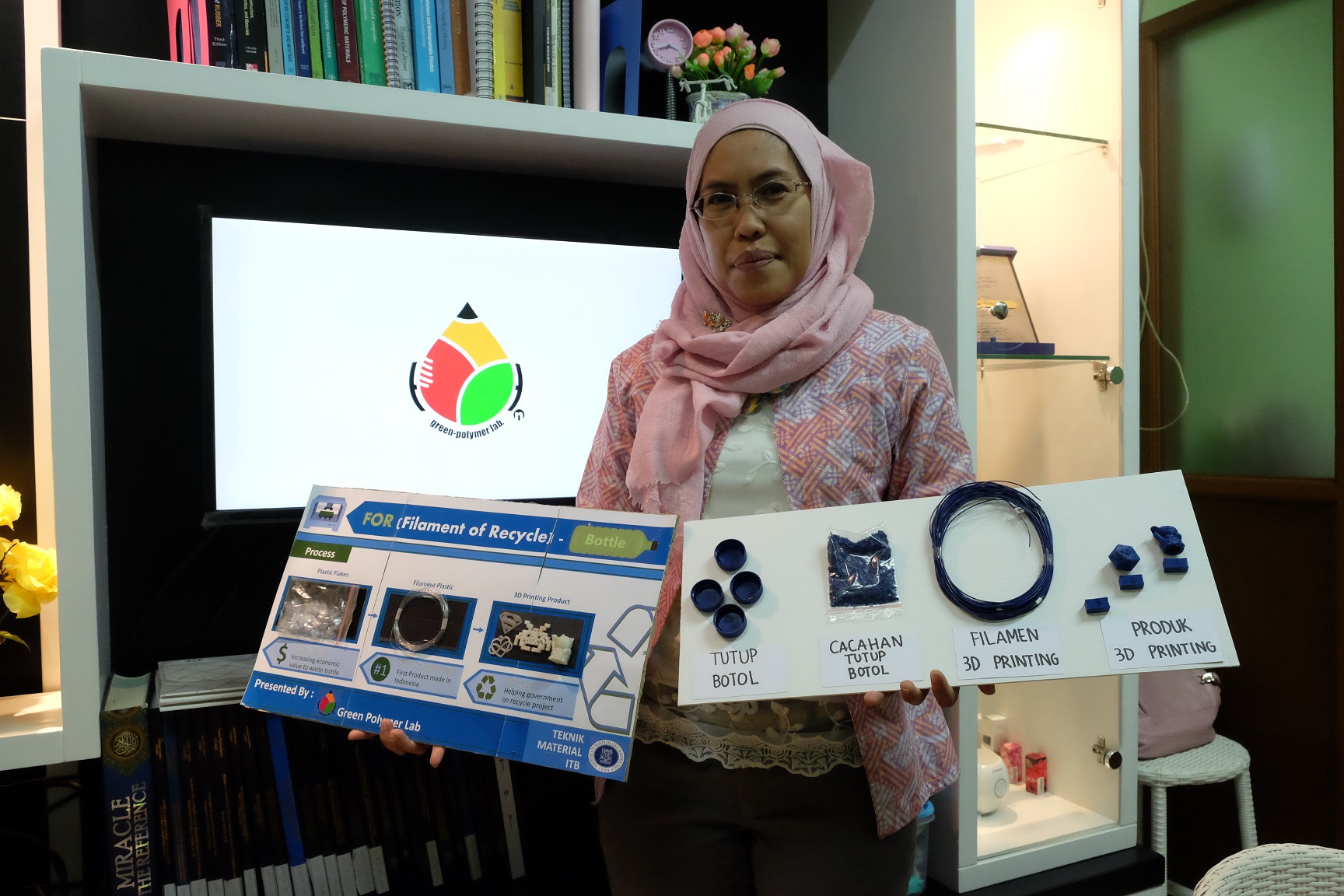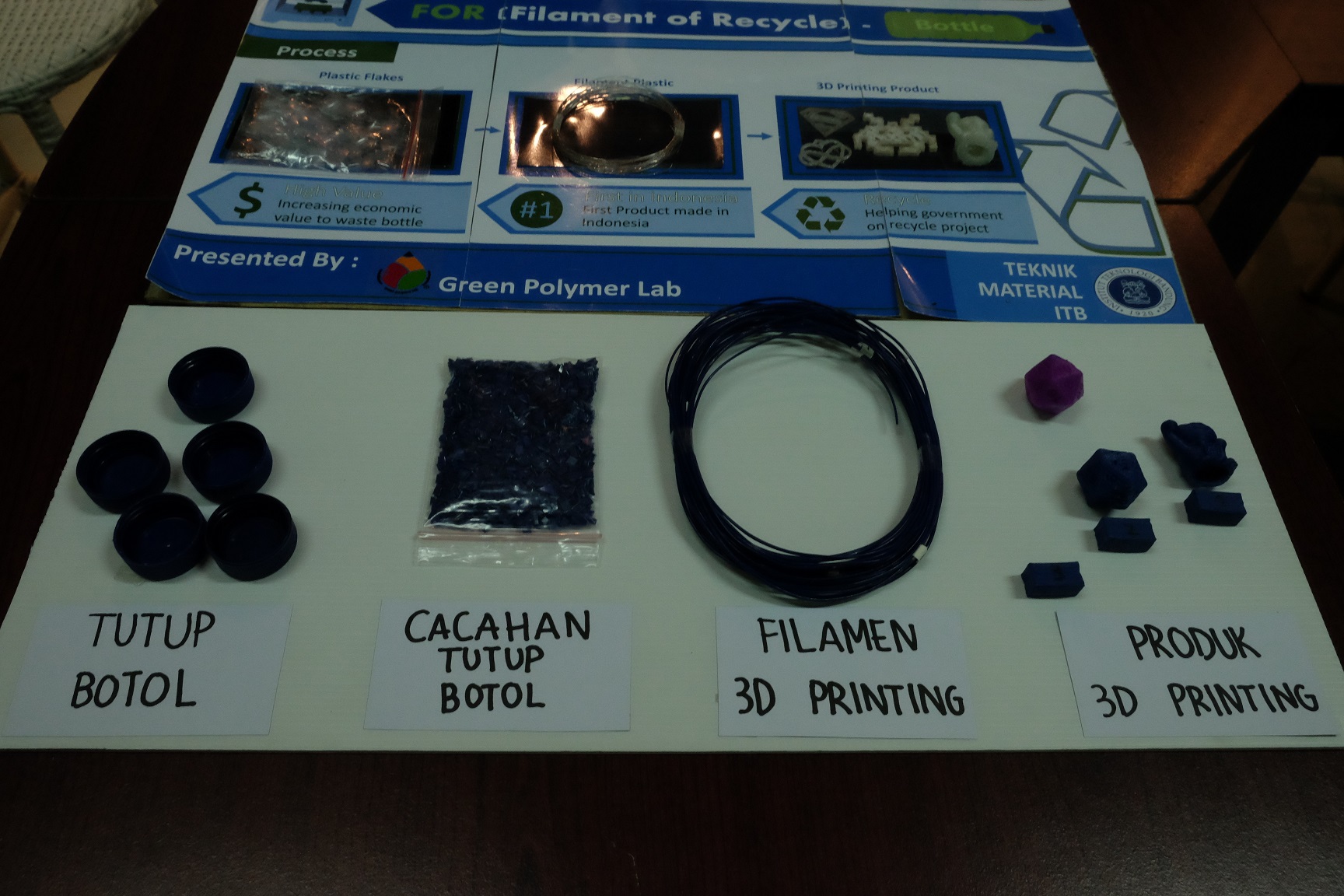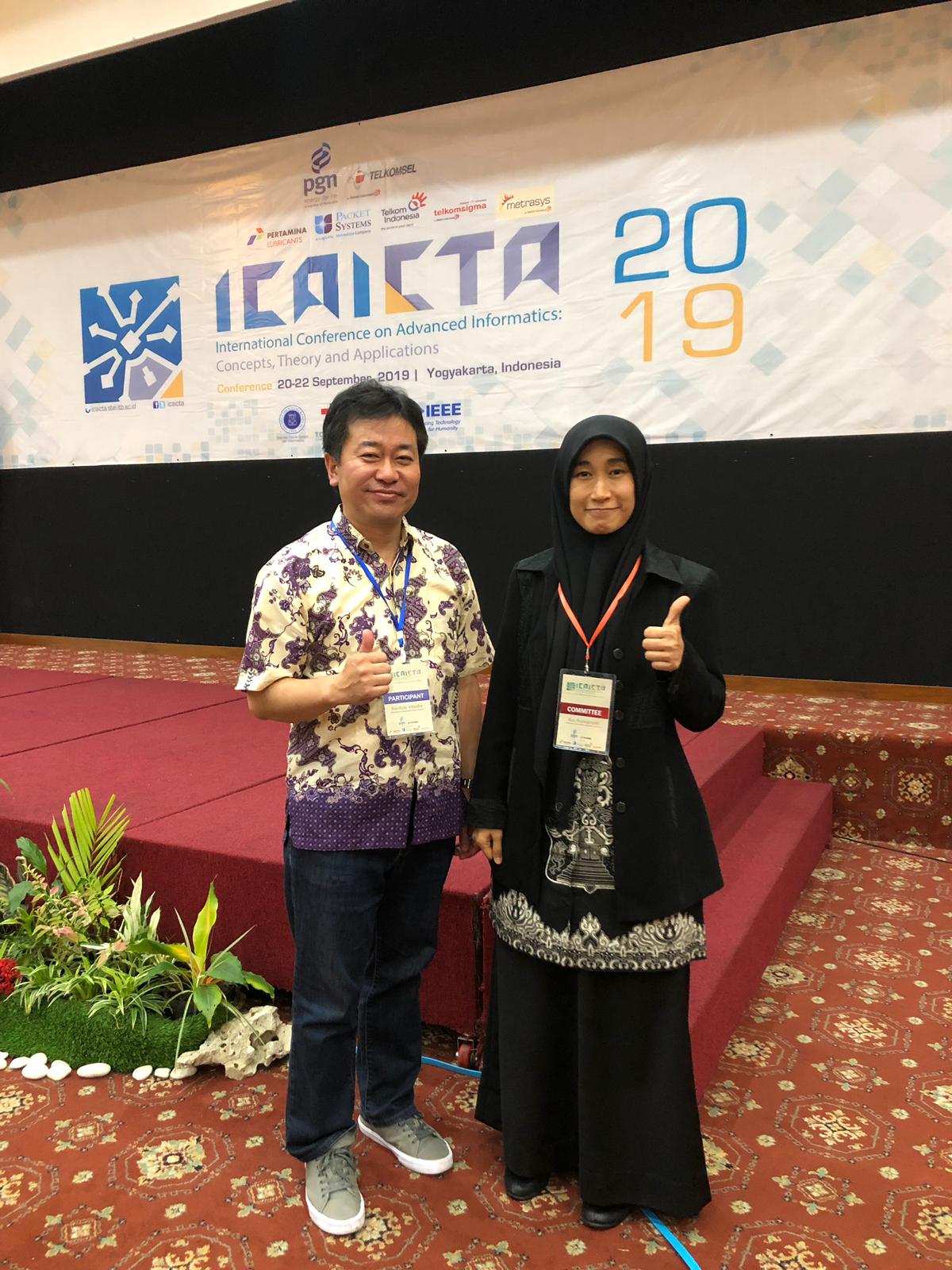ITB Lecturer Develops 3D Printing Filament from Plastic Bottle Waste
By Adi Permana
Editor Adi Permana

BANDUNG, itb.ac.id – Waste, including plastic waste remains a challenge to tackle. Plastic, at the same time, is also required. The material is lightweight, easily formed, cheap and used for almost every daily needs. However, plastic waste is one of the most difficult to degrade naturally hence it pollutes the environment.
Departing from that issue, Dr. Mardiyati conducted a research on utilization of plastic bottle waste as 3D printing filament. The research titled “Preparation of 3D Printing Filament Made from Thermoplastic Waste".
Utilization and demand for 3D printing filament is increasing significantly, but commercial 3D printing filament available in the market is made from expensive materials and imported. Therefore, Dr. Mardiyati looks for alternative materials for filament using thermoplastic from plastic bottle waste.
Thermoplastic is a material that is recyclable and reusable for a new product through a heating process. That is why the research focus on the development and utilization of thermoplastic as 3D printing filament material. The research aims to develop 3D printing filament made from plastic bottle waste and extract thermoplastic filament performance.
Research and development is conducted on Green Plymer Lab, Faculty of Mechanical and Aerospace Engineering of ITB. Dr. Mardiyati began the research in 2016 and finished it in 2018. The research was then successful in developing 3D printing filament made from Polypropylene bottle cap and PET water bottle. The research also has patent.
“ABS and PLA filaments are very expensive in the market. Departing from that problem, the idea came to create filament from plastic waste for products. We shall try to make our own filament from plastic waste for 3D printing material,” said Dr. Mardiyati.
The Making Process
So, how is the process of making filament from plastic bottle cap? Here is the process.
Explained by Dr. Mardiyati, the first step is collecting the bottle cap waste and then chopped it into small pieces. After that, the pieces are processed in extrusion machine until it becomes filament. This filament will be the material for 3D printing.
The 3D printing machine is bought in the market and modified to accommodate the thermoplastic filament. Dr. Mardiyati also successfully develop a research on filament material from plastic bottle, not only the cap.
*Photo: Doc. Humas ITB
“The difference between filament made from plastic bottle caps and the bottle itself is the extrusion process. The bottle cap only needs 180o Celcius only to melt, but the bottle body needs 240o Celsius, and need particular mix,” she said.
Besides the filament, Dr. Mardiyati together with Green Polymer Lab Team also conduct other researches on plastic waste. One of the researches is about recycling plastic waste into crafts. Interest has come for her that children’s educational tool made from recycled plastic waste and it will be displayed in Embassy of Netherland.
“Hopefully, I always want to encourage my students to make beneficial products for society and respond to problems in the society. So, we conduct researches not merely for assignments and give a report, I prefer to look for problem in society and do something wit our research so that the benefit comes back to the society,” she concluded.

.jpg)

.jpg)



